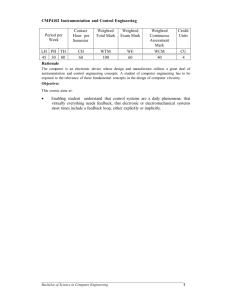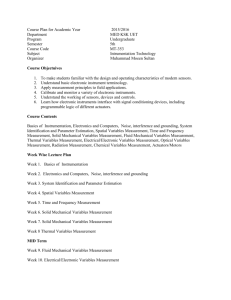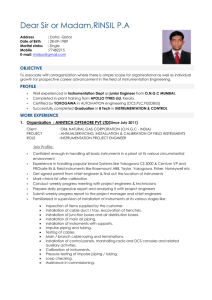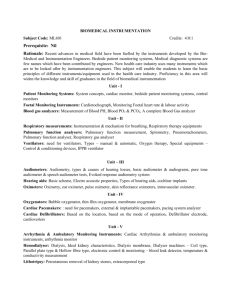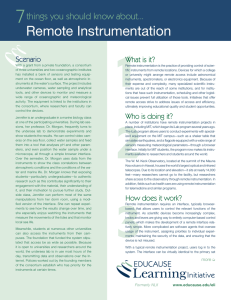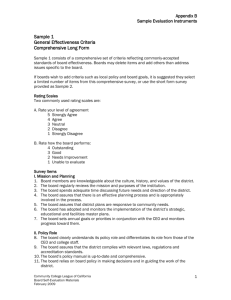United Nations Exam
advertisement
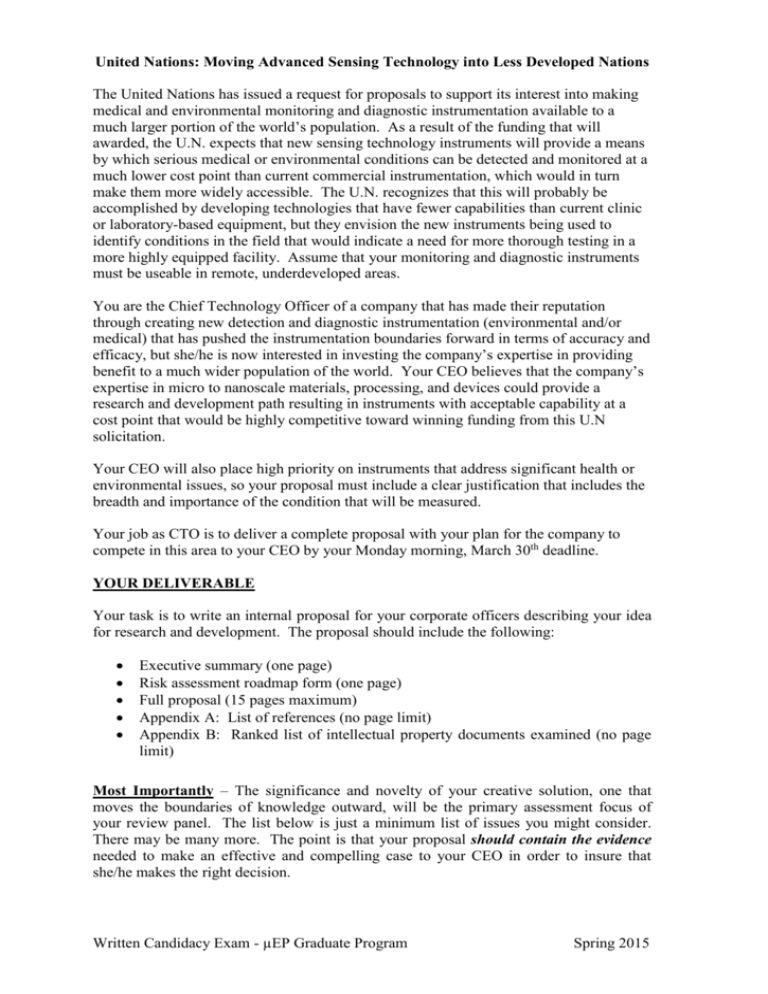
United Nations: Moving Advanced Sensing Technology into Less Developed Nations The United Nations has issued a request for proposals to support its interest into making medical and environmental monitoring and diagnostic instrumentation available to a much larger portion of the world’s population. As a result of the funding that will awarded, the U.N. expects that new sensing technology instruments will provide a means by which serious medical or environmental conditions can be detected and monitored at a much lower cost point than current commercial instrumentation, which would in turn make them more widely accessible. The U.N. recognizes that this will probably be accomplished by developing technologies that have fewer capabilities than current clinic or laboratory-based equipment, but they envision the new instruments being used to identify conditions in the field that would indicate a need for more thorough testing in a more highly equipped facility. Assume that your monitoring and diagnostic instruments must be useable in remote, underdeveloped areas. You are the Chief Technology Officer of a company that has made their reputation through creating new detection and diagnostic instrumentation (environmental and/or medical) that has pushed the instrumentation boundaries forward in terms of accuracy and efficacy, but she/he is now interested in investing the company’s expertise in providing benefit to a much wider population of the world. Your CEO believes that the company’s expertise in micro to nanoscale materials, processing, and devices could provide a research and development path resulting in instruments with acceptable capability at a cost point that would be highly competitive toward winning funding from this U.N solicitation. Your CEO will also place high priority on instruments that address significant health or environmental issues, so your proposal must include a clear justification that includes the breadth and importance of the condition that will be measured. Your job as CTO is to deliver a complete proposal with your plan for the company to compete in this area to your CEO by your Monday morning, March 30th deadline. YOUR DELIVERABLE Your task is to write an internal proposal for your corporate officers describing your idea for research and development. The proposal should include the following: Executive summary (one page) Risk assessment roadmap form (one page) Full proposal (15 pages maximum) Appendix A: List of references (no page limit) Appendix B: Ranked list of intellectual property documents examined (no page limit) Most Importantly – The significance and novelty of your creative solution, one that moves the boundaries of knowledge outward, will be the primary assessment focus of your review panel. The list below is just a minimum list of issues you might consider. There may be many more. The point is that your proposal should contain the evidence needed to make an effective and compelling case to your CEO in order to insure that she/he makes the right decision. Written Candidacy Exam - µEP Graduate Program Spring 2015 At a minimum, be sure you address all of the following: Current Science and Technologies - What is already being done in this area by other researchers, companies and governmental institutions? Describe the current state-of-theart for both the science and the implementation. Use diverse resources such as science literature, journals, conference proceedings, the internet, patents or other sources of existing public knowledge. Cite all references you use and use quotes for any word-forword transfer to your report. Your Design Approach – What is the basis for your design approach to the problem? Why is your product better than existing products? What product attribute(s) allow market penetration to achieve profitability? Address scientific and engineering aspects of these questions. Testing and Qualification - Describe a set of tests you will use to demonstrate that your approach is effective and that your implementation of the solution will launch successfully. Cost Analysis – Identify cost and market issues that will impact the pricing strategy of the solution you have proposed. Consider such things as: the major cost items that would impact the implementation; which elements of your implementation solution would be handled in-house versus externally-sourced; major risk elements that could drive up costs if the primary path item fails; costs of IP licensing needed, etc. Provide justification and/or reasoning behind your decisions. Estimate manufacturing cost for the total system as the product reaches mature product stage, so the marketing team can determine potential market size. Avoid subcontracting manufacture or assembly of any proprietary component outside the company, because the CEO is concerned with potential IP leakage. Intellectual Property – In Appendix B, list in rank order of importance all commercial, academic, and governmental IP sources that were consulted while formulating the answer, including reference data. For instance, include the patent number; title; inventor name; and assignee name for a patent. Discuss the 3 most significant IP documents affecting your approach to your solution in the 15-page document. Compare strengths and weaknesses of these approaches relative to your own. Recommend how these IP threats should be handled. Hint – Clearly state your hypothesized solution. Identify its innovation(s) and advantages relative to state of the art. Describe both existing data, and work needed to support each aspect of the hypothetical solution. Consider theoretical, fabrication, and characterization aspects: for each, identify software/equipment and methods to use, parameters to vary, anticipated outcomes, and possible alternatives in the event of unsatisfactory results. Discuss material, process, device, and systems aspects of your solution. Refine your hypothesized solution as you accumulate information and prepare the manuscript. Remember: clearly distinguish what is known from what is hypothesized or not known. What is needed to distinguish the important things to know? Reference the 2015 PhD Candidacy Exam Guidelines document for general instructions. Written Candidacy Exam - µEP Graduate Program Spring 2015

